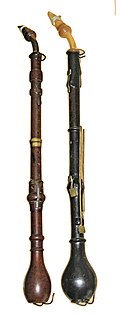| Established | 1968 |
|---|---|
| Location | St. Aldate's, Oxford, England |
| Coordinates | 51°44′56″N1°15′22″W / 51.7488°N 1.2562°W |
| Type | University museum of musical instruments |
| Website | www.bate.ox.ac.uk |

The Bate Collection of Musical Instruments is a collection of historic musical instruments, mainly for Western classical music, from the Middle Ages onwards. It was housed in Oxford University's Faculty of Music near Christ Church on St. Aldate's before moving to the newly constructed Schwarzman Centre for the Humanities in 2025.
Contents
The collection is open to the public and is available for academic study by appointment. There are frequent gallery events and special exhibitions. More than a thousand instruments by important English, French and German makers, are on display, showing the musical and mechanical development of wind and percussion instruments from the Renaissance to the current day. [1] [ citation needed ]
The Bate Collection is additionally the home of the Reginald Morley-Pegge Memorial Collection of Horns and other Brass and Woodwind Instruments; the Anthony Baines Collection; the Edgar Hunt Collection of Recorders and other instruments; the Jean Henry Collection, the Taphouse Keyboard Loans; the Roger Warner Keyboard Collection; the Michael Thomas Keyboard Collection; a number of instruments from the Jeremy Montagu Collection; a complete workshop of the English bow-maker William C Retford, as well as a small collection of Bows formed in his memory, the Wally Horwood Collection of books and recordings, and other instruments acquired by purchase and gift. [1]

An album, 'Voices From The Past, Vol. 2: Instruments of The Bate Collection' was released in 2015. [2]
